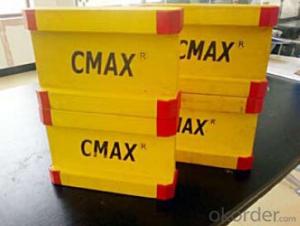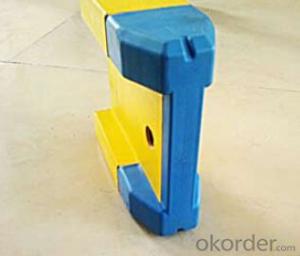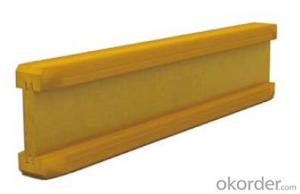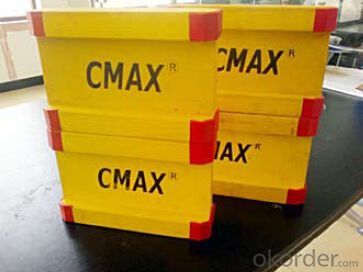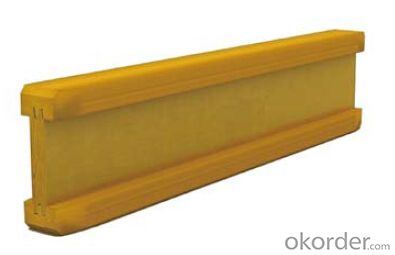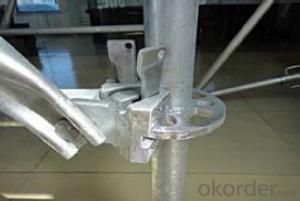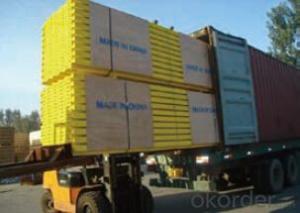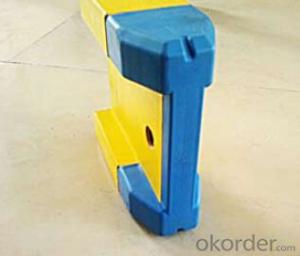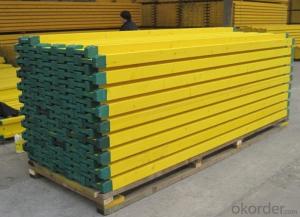Timber Beam Formwork for building construction
- Loading Port:
- Tianjin
- Payment Terms:
- TT OR LC
- Min Order Qty:
- 50 m²
- Supply Capability:
- 1000 m²/month
OKorder Service Pledge
Quality Product, Order Online Tracking, Timely Delivery
OKorder Financial Service
Credit Rating, Credit Services, Credit Purchasing
You Might Also Like
Characteristics:
◆ Standardized production lines.
Supply capability: 3000m/day, Lmax = 6600mm.
◆ Finger jointing of the flange and web, the strength of timber beam is highly improved.
Max. shearing force failure load:40KN
◆ Well treated to prevent from water penetration or erosion, so the service life maximally
extended.
Normally, CNBM timber beam H20 can be used for 4 to 5 years, the exact using time would
depend on maintenance & storage.
◆ Robust caps at the end of the girders protect against damages.
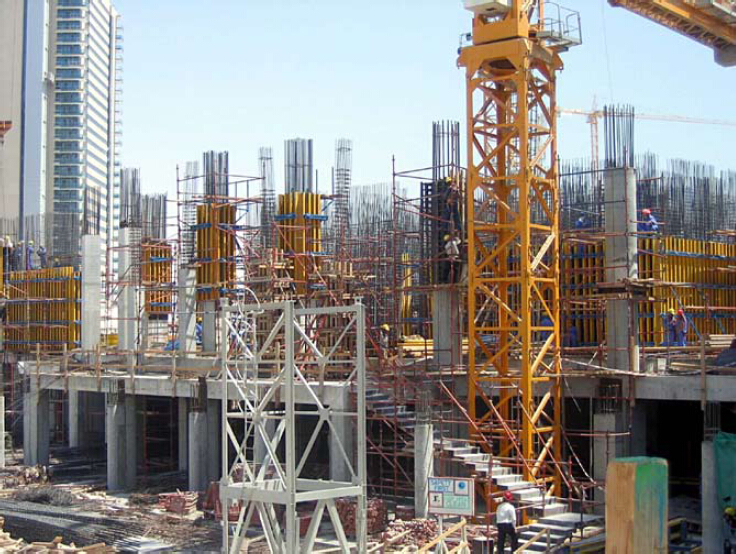
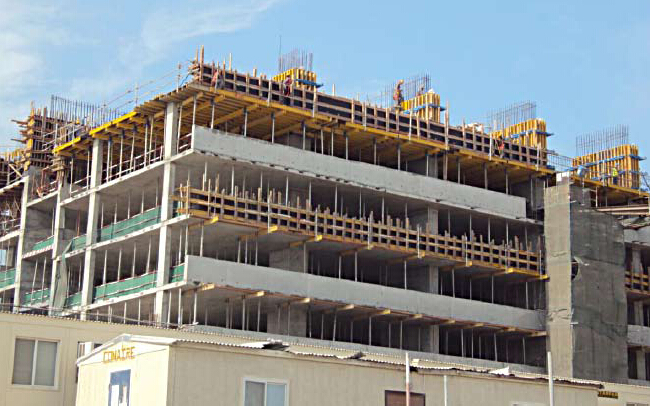
- Q: Can steel formwork be used for dam construction?
- Yes, steel formwork can be used for dam construction. Steel formwork is a versatile and durable option that is commonly used in various construction projects, including dams. It offers several advantages such as high strength, rigidity, and the ability to withstand the immense pressure and weight of concrete used in dam construction. Steel formwork can be easily assembled and disassembled, allowing for efficient and quick construction. Additionally, it provides a smooth and uniform finish to the concrete, ensuring the structural integrity and longevity of the dam.
- Q: Can steel formwork be used for bridge construction projects?
- Bridge construction projects can indeed utilize steel formwork. This versatile and durable solution is often favored for its high strength and ability to bear heavy loads. Steel formwork establishes a strong framework capable of withstanding the weight and pressure exerted by concrete during construction. There are several advantages to using steel formwork for bridge construction. Firstly, it can be easily customized and fabricated to achieve the desired shape and size, ensuring precise and efficient construction. Additionally, steel formwork can be reused multiple times, making it a cost-effective option for bridge projects. Moreover, the use of steel formwork guarantees a smooth and even finish on the bridge structure, resulting in a high-quality end product. Steel formwork also allows for the incorporation of various features, such as recesses and openings, which are often crucial in bridge construction. In conclusion, steel formwork is a suitable choice for bridge construction due to its strength, durability, and ability to provide precise and uniform finishes.
- Q: How does steel formwork compare to plastic formwork?
- Steel formwork is generally more durable and long-lasting compared to plastic formwork. It can withstand heavy loads and provides better stability and support during the concrete pouring process. Additionally, steel formwork is reusable and can be easily adjusted and customized according to project requirements. On the other hand, plastic formwork is lighter and easier to handle, making it more suitable for small-scale projects. However, it may not be as sturdy and may require more frequent replacements.
- Q: How does steel formwork handle concrete shrinkage cracking?
- Concrete shrinkage cracking, which occurs as concrete dries and shrinks during curing, is specifically addressed by steel formwork. By minimizing and controlling these cracks, steel formwork plays a crucial role. During the curing process, steel formwork offers robust and rigid support to the concrete. It maintains the concrete's position, preventing any movement or shifting as it shrinks. This effectively restrains the development of large, uncontrolled cracks. Moreover, steel formwork withstands the high pressure exerted by the concrete during curing. This ensures that the formwork remains intact and free from deformation or breakage, thereby averting any cracks in the concrete. Furthermore, steel formwork allows for the incorporation of expansion joints. These joints are strategically positioned within the formwork to accommodate the anticipated shrinkage of the concrete. By providing controlled spaces for the concrete to shrink into, the formation of random cracks is minimized. Additionally, steel formwork offers the advantage of easy inspection for any cracks that might have occurred during curing. This enables early detection and repair of potential issues, preventing further cracking or damage to the concrete structure. In conclusion, steel formwork effectively addresses concrete shrinkage cracking through its strong support, resistance to pressure, provision of expansion joints, and facilitation of inspection and repair.
- Q: What are the different types of corner solutions available for steel formwork?
- There are several different types of corner solutions available for steel formwork, each with its own advantages and applications. 1. External Corner Solutions: These are typically L-shaped or angled brackets that are used to form external corners in concrete structures. They are easy to install and provide a clean and sharp finish to the corners. External corner solutions are commonly used in building construction, especially for walls and columns. 2. Internal Corner Solutions: Similar to external corner solutions, internal corner solutions are used to form internal corners in concrete structures. They can be either L-shaped or U-shaped brackets, depending on the specific requirements. Internal corner solutions are commonly used in the construction of walls, slabs, and beams. 3. Adjustable Corner Solutions: These are versatile corner solutions that allow for adjustable angles and dimensions. They are designed to accommodate various corner configurations, making them suitable for complex structures or irregular shapes. Adjustable corner solutions are often used in the construction of curved walls, circular columns, and other unique architectural features. 4. Hinged Corner Solutions: Hinged corner solutions are specialized brackets that allow for easy removal of formwork after the concrete has cured. They feature hinges that enable the formwork to be opened and closed, providing quick and efficient access to the concrete surface. Hinged corner solutions are commonly used in applications where frequent access to the concrete surface is required, such as in tunnels or underground structures. 5. Reinforced Corner Solutions: These corner solutions are specifically designed to provide additional strength and support to the corners of concrete structures. They are reinforced with steel bars or plates to enhance the structural integrity and durability of the formwork. Reinforced corner solutions are commonly used in high-rise buildings, bridges, and other heavy-duty structures. Overall, the choice of corner solution depends on the specific requirements of the construction project, including the desired finish, structural integrity, and ease of installation and removal. It is important to consider these factors and consult with a structural engineer or formwork specialist to determine the most suitable corner solution for a particular application.
- Q: Can steel formwork be used for both above-grade and below-grade walls?
- Steel formwork is a versatile construction tool that can be utilized for both above-grade and below-grade walls. Its adaptability allows for its use in various construction applications, encompassing both above-grade and below-grade walls. With its robustness and resilience, it is well-suited to endure the weight and pressure exerted by the concrete employed in these walls. Furthermore, the ease with which steel formwork can be assembled and disassembled facilitates efficient construction procedures for both wall types. Be it for basement walls or exterior walls above ground, steel formwork guarantees the essential support and shape for effective concrete pouring, ultimately yielding enduring and sturdy structures.
- Q: What are the different sizes and dimensions available for steel formwork panels?
- The sizes and dimensions of steel formwork panels can vary depending on the manufacturer and specific project requirements. However, common sizes range from 1.2 meters by 1.8 meters to 3 meters by 6 meters. Additionally, panels can have different thicknesses, typically ranging from 12mm to 18mm.
- Q: How does steel formwork compare to aluminum formwork in terms of cost?
- Steel formwork generally tends to be more cost-effective compared to aluminum formwork. This is primarily due to the fact that steel is a cheaper material than aluminum. Additionally, steel formwork is known for its durability and long lifespan, which further reduces overall costs in the long run. On the other hand, aluminum formwork may have a higher initial cost but is lighter in weight, making it easier to handle and transport.
- Q: Can steel formwork be used for precast concrete elements?
- Indeed, precast concrete elements can be constructed using steel formwork. The utilization of steel formwork in precast concrete fabrication is widely favored due to its robustness and ability to be reused. It creates a sturdy and inflexible framework capable of withstanding the force exerted by liquid concrete during casting and the load of solidified concrete after curing. Moreover, steel formwork guarantees a uniform and polished appearance for the precast elements, ensuring impeccable and accurate outcomes. Furthermore, the assembly and disassembly of steel formwork is effortless, enabling efficient manufacturing and convenient transportation of precast elements.
- Q: Are there any specific safety guidelines for steel formwork construction?
- Yes, there are specific safety guidelines for steel formwork construction. These guidelines typically include recommendations for the proper handling and storage of steel formwork components, ensuring adequate bracing and support to prevent collapse, implementing fall protection measures for workers, and conducting regular inspections to identify and address any potential hazards. Additionally, adherence to general construction safety practices, such as providing personal protective equipment and maintaining a clean and organized work area, is also important in steel formwork construction.
Send your message to us
Timber Beam Formwork for building construction
- Loading Port:
- Tianjin
- Payment Terms:
- TT OR LC
- Min Order Qty:
- 50 m²
- Supply Capability:
- 1000 m²/month
OKorder Service Pledge
Quality Product, Order Online Tracking, Timely Delivery
OKorder Financial Service
Credit Rating, Credit Services, Credit Purchasing
Similar products
Hot products
Hot Searches
